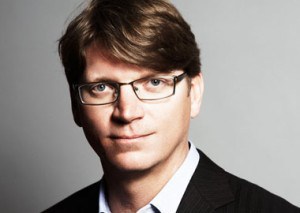 “Disruptive” is perhaps too timid a word to use for Skype co-founder Niklas Zennstrom, the man who brought Excedrin-strength headaches to the music industry with file-swapping software Kazaa and streamed video across the net for free with Joost. Now he wants to blow up America’s business model for expensive wireless data by literally giving it away to wireless phone users.
“Disruptive” is perhaps too timid a word to use for Skype co-founder Niklas Zennstrom, the man who brought Excedrin-strength headaches to the music industry with file-swapping software Kazaa and streamed video across the net for free with Joost. Now he wants to blow up America’s business model for expensive wireless data by literally giving it away to wireless phone users.
FreedomPop has a “freemium” business model of its very own — give away 1GB of 4G data through Clearwire to iPhone owners willing to use FreedomPop’s WiMAX-fitted phone case with the hope users will throw more business their way for around $10/GB after the first gigabyte is gone.
Clearwire has been in the mood to make deals with all-comers to leverage its WiMAX network that carriers like Sprint plan to abandon for LTE 4G service in the not-too-distant future. By giving away 1GB of free usage (and it remains unclear whether this is a “one-off” deal or if the meter resets to zero every month), the company is set to draw plenty of free press.
FreedomPop is likely to appeal to price-sensitive customers who don’t want to pay providers $30 a month for 2-3GB of usage when a much smaller, cheaper data plan combined with the free service will do.
The WiMAX case, which will fit over Apple’s iPhone, also acts as a mobile hotspot, supporting up to eight concurrently-connected devices. No change of phone is required as users can connect to the service through Wi-Fi.
Customers will have to place a deposit on the case, likely less than $100, refundable when returned in good condition.
With most people not exceeding 1GB of usage per month, the only cost will be the “bare minimum” data plan customers are required to take with AT&T, Verizon Wireless, or Sprint, which currently runs $15-20 for a few hundred megabytes.
Clearwire’s WiMAX doesn’t deliver coverage to all points in the United States, and its speeds are considerably lower than 4G LTE service. But free is free – a concept NetZero hopes to use to pitch a similar free 4G Clearwire WiMAX service. The primary difference is your granted usage allowance. FreedomPop will provide 1GB — NetZero 200MB.
[flv width=”512″ height=”308″]http://www.phillipdampier.com/video/WSJ How Skype Co-Founder Hopes to Make Money Giving Away Mobile Broadband on FreedomPop 3-23-12.flv[/flv]
The Wall Street Journal explores the business model of FreedomPop. How can giving away 4G data succeed financially? (4 minutes)


 Subscribe
Subscribe

